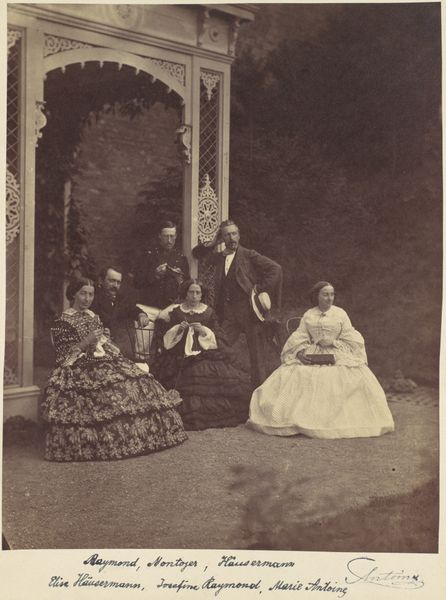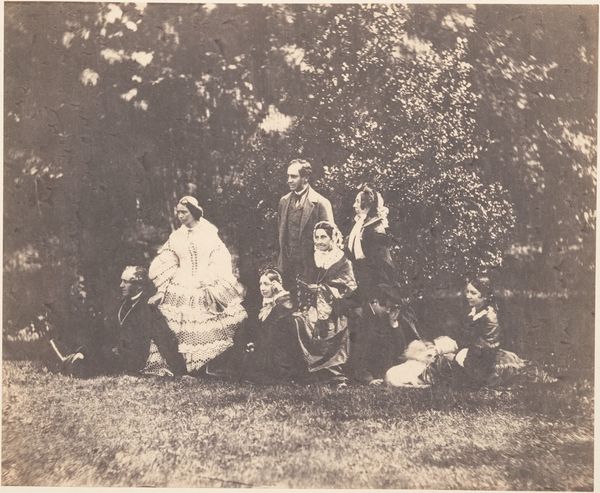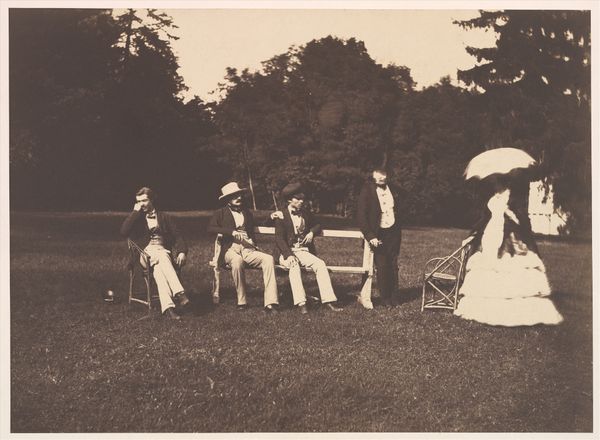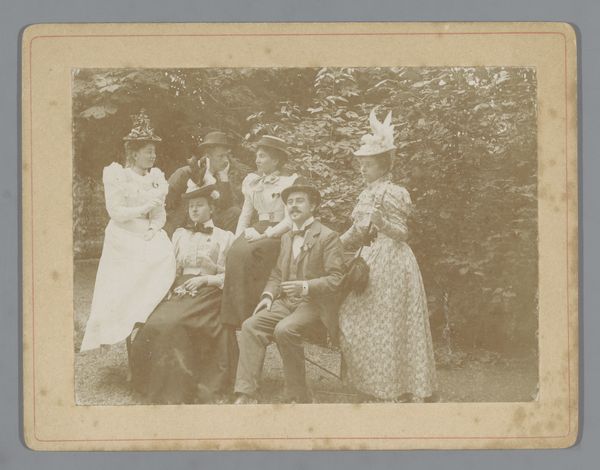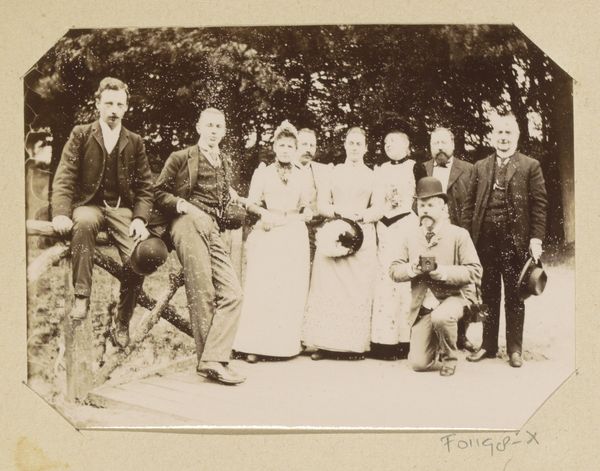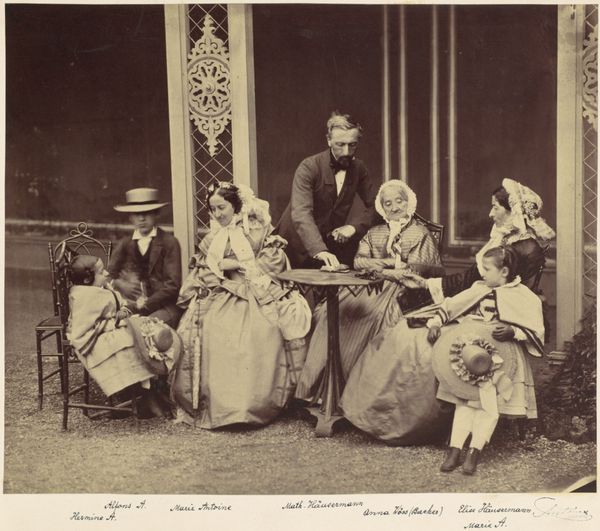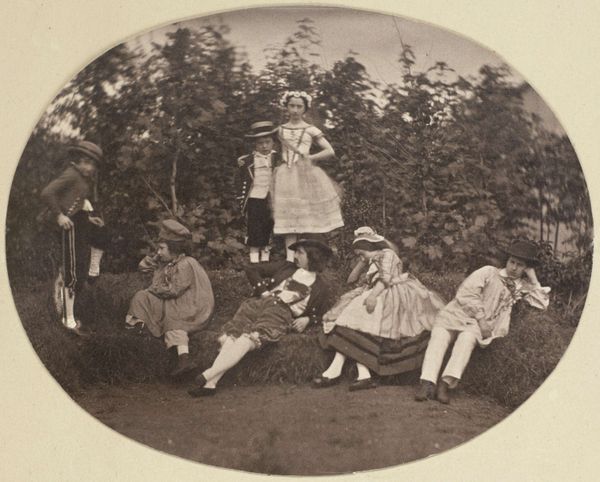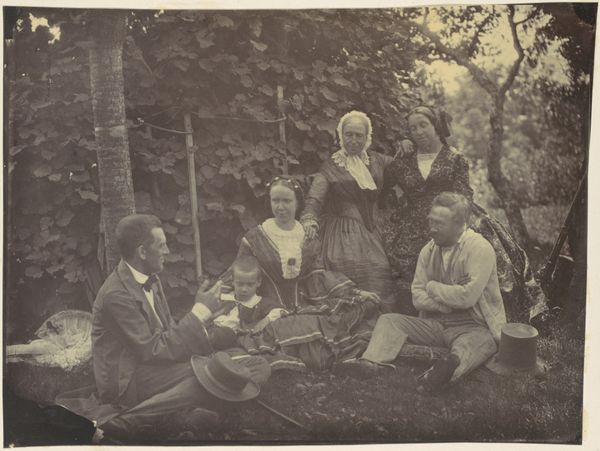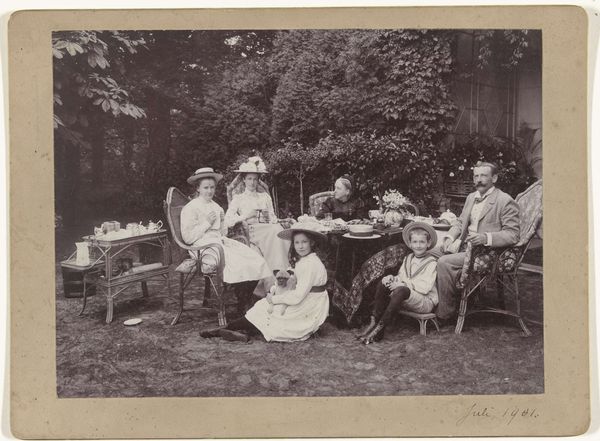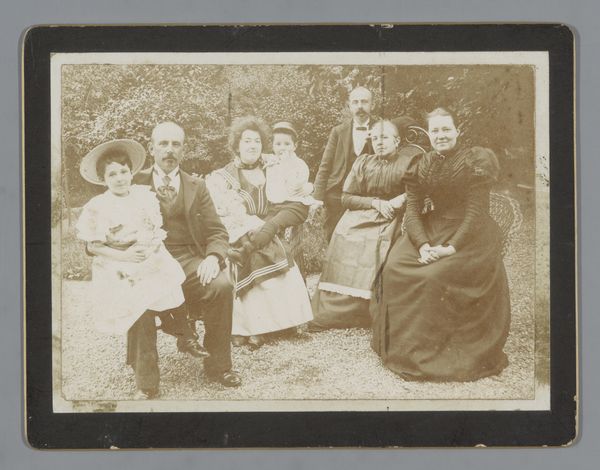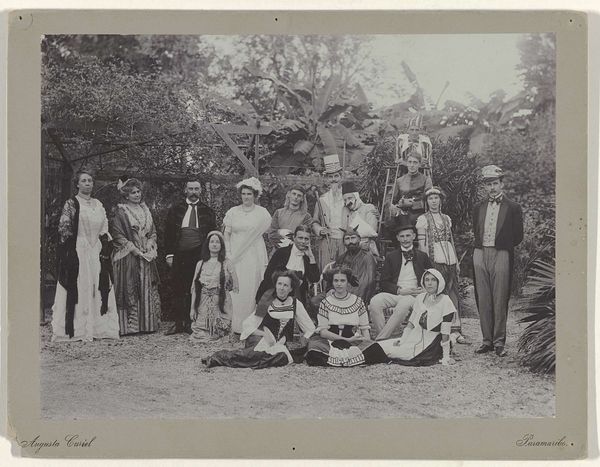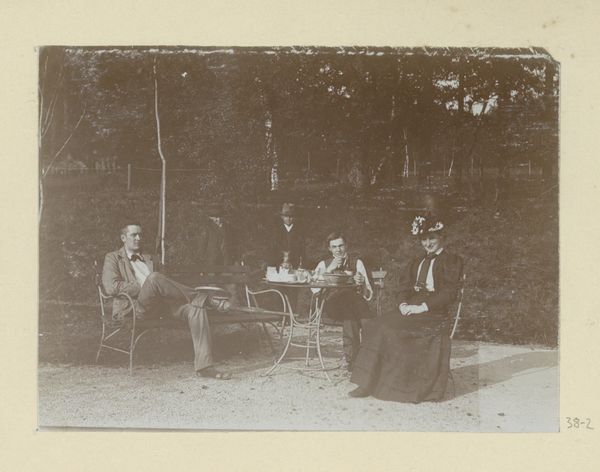![[Group Portrait of Four Women, Two Men and Three Children in a Garden] by Franz Antoine](/_next/image?url=https%3A%2F%2Fd2w8kbdekdi1gv.cloudfront.net%2FeyJidWNrZXQiOiAiYXJ0ZXJhLWltYWdlcy1idWNrZXQiLCAia2V5IjogImFydHdvcmtzL2IxYzlmMjVlLTkzYzQtNGVhYy05NTRjLTE2ZGI3YjE1ZmE5Yy9iMWM5ZjI1ZS05M2M0LTRlYWMtOTU0Yy0xNmRiN2IxNWZhOWNfZnVsbC5qcGciLCAiZWRpdHMiOiB7InJlc2l6ZSI6IHsid2lkdGgiOiAxOTIwLCAiaGVpZ2h0IjogMTkyMCwgImZpdCI6ICJpbnNpZGUifX19&w=3840&q=75)
[Group Portrait of Four Women, Two Men and Three Children in a Garden] 1850s - 1860s
0:00
0:00
photography
#
portrait
#
photography
#
group-portraits
#
genre-painting
Dimensions: 2.3 x 37.8 cm. (0 15/16 x 14 7/8 in.)
Copyright: Public Domain
Editor: Here we have an 1850s or 60s photograph, titled "Group Portrait of Four Women, Two Men and Three Children in a Garden," possibly by Franz Antoine. It has a lovely stillness, like a tableau vivant, even though it's capturing a seemingly spontaneous family moment. How would you interpret the photograph, looking at it through a historical lens? Curator: The very act of commissioning such a portrait reveals much about the socio-economic status and aspirations of the sitters. Mid-19th-century photography was becoming more accessible, but still signified a certain level of affluence. What I find striking is the construction of domesticity presented. Notice the arrangement of the figures - the women’s voluminous dresses practically anchoring them to the ground, the men positioned slightly above and behind, subtly suggesting their societal roles. What do you think the setting itself conveys? Editor: It definitely emphasizes leisure. It is a lush garden. The subjects have carefully positioned themselves. Also, those dresses… they’re not exactly ideal for running around and getting dirty! I guess I'm wondering, is there something deliberately performative about this image, an ideal they're trying to project? Curator: Precisely! The ‘genre painting’ aspect points to a construction of bourgeois family life intended for public consumption – a visual assertion of their place in society. Photography, at this point, wasn’t just about capturing a likeness; it was about crafting an image that reinforced social norms and hierarchies. Consider the poses; they lack informality suggesting strictures in social performance. The photograph can then be read as a stage setting for a particular idealized narrative. Editor: That's fascinating. It really puts the stiff formality of the portrait into perspective. Curator: Indeed. Considering this photograph not merely as a record, but as a consciously produced artifact offers insights into 19th-century social dynamics, representation, and the power of imagery to shape perceptions. I was initially focused on who wanted the photograph taken and to what purpose did they have for commissioning such a visual artifact. Editor: Now I'm seeing a carefully orchestrated piece of propaganda! It’s shifted my perspective quite a bit. Curator: Mine, too. Understanding is iterative.
Comments
No comments
Be the first to comment and join the conversation on the ultimate creative platform.
